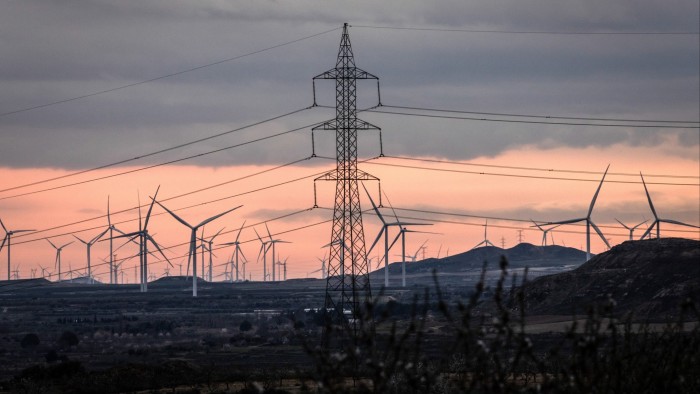Stay informed with free updates
Simply sign up to the EU energy myFT Digest — delivered directly to your inbox.
Spain’s grid operator has accused some large power plants of not doing their job to help regulate the country’s electricity system in the moments before last month’s catastrophic blackout across the Iberian peninsula.
Beatriz Corredor, chair of grid operator Red Eléctrica’s parent company, said power plants fell short in controlling the voltage of the electricity system.
However, the heads of Spain’s biggest plant owners linked the blackout to a lack of grid investment and insufficient efforts to boost electricity demand.
The public blame game over the outage is intensifying as more than three weeks after 60mn people were left without power, Spanish government investigators insisted they needed more time to establish the root cause.
The revelations on Thursday from Corredor, chair of Redeia, open up a new front after the spotlight fell initially on Spain’s high dependence on wind and solar energy as a possible cause of the blackout.
Corredor did not say large power plants were the root cause, but she said the functioning of certain gas, nuclear or hydroelectric facilities in south-west Spain was “below [the levels] required by current voltage control regulations”.
Their role is potentially significant because experts have identified the proximate cause of the blackout as a surge in voltage on the grid, together with a drop in the frequency at which the electrical current alternates, which triggered the disconnection of multiple generation plants.
Corredor insisted that moments before the failure on April 28, the part of the system controlled by Red Eléctrica, including grid substations, was operating within the voltage ranges established by regulatory norms.
“So we have to consider what was happening with voltage in the rest of the system,” she said. “Because [Red Eléctrica] are the brain, the spine. But this system obviously has arms, legs, and it has a heart, which is the plants that generate electricity.”
Voltage surges on the grid cause power plants to disconnect automatically for safety reasons to protect equipment from damage.
Corredor said voltage variations “had a lot to do with” the role of power plants in regulating levels by “absorbing” what is known as reactive power, a portion of electricity that oscillates between generators and final consumers. Her contention was that absorption levels shortly before the blackout were too low.
Spain’s three biggest power plant owners are Endesa, Iberdrola and Naturgy.
One power sector official pushed back against the claims, saying “the power plants provided the best services they could despite the abnormal behaviour of the transmission grid”, which is run by Red Eléctrica.
The official said Red Eléctrica “could have activated more power plants to control voltage and absorb reactive power, both the day before and during the morning [of April 28]”.
José Bogas, Endesa’s chief executive, said on Thursday a crucial lesson of the power failure was that Spain had failed to update its grid for an era of heavy dependence on wind and solar — which were contributing about 70 per cent of its electricity just before the blackout.
Speaking before Corredor at an event organised by the newspaper Expansión, Bogas noted that individual renewable installations were — compared with traditional fossil fuel and nuclear power plants — smaller, more dispersed and further from big centres of consumption.
But he said: “I think we have continued to operate the system as we did when we [depended more on] the large [traditional] power plants.”
Mario Ruiz-Tagle, chief executive of Iberdrola’s Spain business, said one underlying problem was that the country had not done enough to foster demand for all the electricity it can produce.
“The problem isn’t the amount of renewable energy we have. The problem is making sure we use those renewables so that industry can be electrified, so that electric vehicles can be more widespread, so that heat pumps can be more widespread.”


